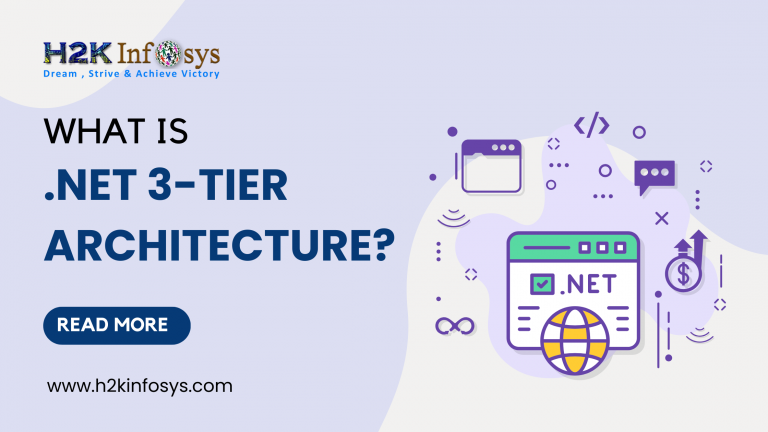With a three-layer architecture, UI, logic, and data are divided into three separate layers: the user interface layer, the business layer, and the data (database) layer. If a user wishes to go from Windows to a phone, he only needs to modify the UI layer; this change has no effect on the other layers. Comparably, all that needs to be changed for the user to modify the database is the data layer; otherwise, nothing changes.
The well-known three-tier architecture divides software applications into three logical and physical computing tiers: the application tier, which processes data, the data tier, which stores and manages application-related data, and the presentation tier, which is the user interface. To learn more about the 3-Tier Architecture and how it works with the .NET framework, you can check out the .NET online course.
The main advantage of a three-tier architecture is that each tier can be built concurrently by a different development team and scaled or updated independently of the other levels due to each tier operating on its own infrastructure.
Three-tier architecture predominated for many years in client-server applications. The majority of three-tier apps are currently being considered for migration to the cloud and modernization through the use of cloud-native technologies like microservices and containers.
Why to use 3-Tier Architecture in Projects?
To handle big projects, we employ a three-tier architecture. Here’s an illustration: Assume you have written 2000 entity codes and that you have only used one layer to write it all. If you wish to switch from a Windows application to a mobile or web application, you will need to create code for all 2000 entities once more. Similarly, if you want to switch database providers, you will need to modify the database connections in all 2000 entities. Writing so much code is therefore a waste of time and money. Furthermore, writing a lot of code in a single layer just makes it harder for newcomers to understand.
Thus, we should employ 3-Tier Architecture in projects to enable maintenance, flexibility, updating flexibility without affecting other portions, and clean and intelligible code. There are essentially three layers to this architecture:
- Presentation Layer
This is the top layer of architecture. The user interface is the application’s highest level. What the user sees has to do with the user interface. This layer’s primary purpose is to transform tasks into understandable output for the user. It includes pages that resemble web forms and Windows forms, which are used to provide data to users and collect their input. Since the user sees the presentation layer first and is drawn in by a well-designed user interface, it is the most crucial layer to consider.
- Business Layer
This is the middle layer of architecture. This layer performs logical calculations and processes, and it contains C# classes. It interprets the command, computes, and makes sense decisions. Additionally, it serves as a mediator between the display and data layers, which are surrounding layers. In between these two layers, data is processed. This layer carries out computations and business logic. In addition, this layer verifies the input requirements prior to invoking a data layer procedure. By doing this, you can usually guarantee that the data input is accurate before moving forward and that the outputs are accurate as well. Business rules are what define this input validation process.
- Data Layer
This layer serves as a conduit between the database or data source and the business layer. It has methods for inserting, deleting, updating, and performing other database actions. Stored procedures that are used to query databases are present at this layer. In order to perform operations on the database, this layer connects to the database.
Advantages
- It is quicker and simpler to update to new graphical environments.
- Big, complicated projects are simple to maintain.
- It offers a logical division of the data, business, and presentation layers.
- Data is made more secure by adding an application layer between the presentation and database layers, which increases database security.
- In the display layer, you can conceal pointless techniques from the business layer.
- Updates to data provider queries and project application of OOP’s idea are simple.
Disadvantages
- Compared to a simple client-server design, it is more complicated.
- It takes a lot of time and effort to construct.
- The user should understand object-oriented principles well.
Conclusion
3-Tier Architecture is an important concept in .NET. You can learn more about the 3-Tier Architecture and how it works with the .NET framework by checking out the online .NET training.

























